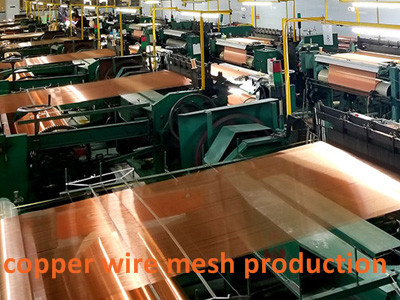A copper mesh production line refers to a manufacturing process designed to produce copper mesh, which is a type of woven wire fabric made from copper wires. Copper mesh finds applications in various industries, including filtration, shielding, electrical conductivity, and decorative purposes.
Here are the general steps involved in a typical copper mesh production line:
Wire Drawing: The process starts with copper wire rods being drawn through a series of dies to reduce their diameter to the desired size. This step ensures uniformity and quality of the copper wire.
Annealing: The drawn copper wire is then subjected to an annealing process where it is heated and slowly cooled. Annealing helps to soften the wire and make it more malleable for subsequent processing.
Wire Cleaning: The annealed copper wire is cleaned to remove any surface impurities, oils, or contaminants that may affect the quality of the final product.
Weaving: Weaving is the interlacing of two sets of wire – the warp and the weft. A shaft lifts up some of the heddles, and the shuttle carries the filling wire or weft between the lifted and unlifted warp strands, and action called picking in shuttleless loom. The reed compressed the new strand of weft against the cloth already woven, and the take-up roller winds the cloth in as the beam lets off warp wire. The machine continues this process until the desired dimensions are reached.
Inspection and Quality Control: The copper mesh is carefully inspected for defects, such as broken wires, irregularities, or inconsistencies in the mesh structure. Any faulty sections are identified and removed.
Cutting and Packaging: The copper mesh is cut into desired sizes and shapes according to customer requirements. It is then packaged and prepared for shipment or further distribution.
